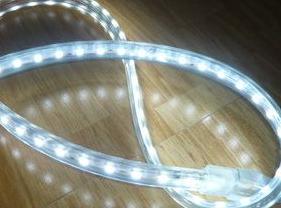SHENZHEN YINZHIGUAN DIGITAL TECHNOLOGY CO.,LTD , http://www.yzgmusiccrown.com Scientists at the University of Georgia in the United States have developed what is said to be the world’s first warm white LED lamp using a single phosphor and a single light emitting unit. The paper on the details of this material was published in the "Physics and Applications" journal of Nature's latest issue.
Scientists at the University of Georgia in the United States have developed what is said to be the world’s first warm white LED lamp using a single phosphor and a single light emitting unit. The paper on the details of this material was published in the "Physics and Applications" journal of Nature's latest issue.
As we all know, LED (Light Emitting Diode) lamps are energy efficient and have a long life, but due to the current LED lights are mainly light blue cold light, which hinders its popularity in the field of indoor lighting.
The author of the paper, Associate Professor Pan Zhengwei of the University of Georgia, said: "At present, white LED lights are mainly used in flashlights and car headlights, but their light blue cold light is not very popular, especially in the field of indoor lighting. Our material achieves a warm color temperature and at the same time achieves true color reproduction. Previously, a single phosphor improved LED did not achieve this effect."
Pan Zhengwei said that there are two main indicators for measuring the quality of artificial light. The correlated color temperature is used to measure the coldness and warmth of light. For indoor lighting, the color temperature is less than 4000K (Kelvin temperature) is ideal, and the correlated color temperature is higher than 5000K, the light emitting device will emit a light blue light like a white LED light. Another important indicator is the degree of color reproduction, which is the ability of the light source to simulate natural light. The degree of reduction of more than 80 is ideal for indoor lighting, below which color will appear distorted.
The material developed by Pan Zhengwei and his colleagues satisfies these two conditions, the correlated color temperature is controlled below 4000K, and the color reproduction degree reaches 85.
Pan Zhengwei said that by coating different colors of phosphors on the outer layers of blue LED chips, warm white light can be emitted, so that white phosphor-based white LED lights can be made. However, it is laborious and expensive to match these raw materials in exact proportions, and the resulting light color will be different because each raw material reacts differently to temperature changes.
One of the paper's authors, Li Xufan, Ph.D. student at the University of Georgia's School of Engineering, said: "Using a single phosphor can solve the problem of unstable light, because a single material does not change with temperature."
In order to develop new phosphors, Pan Zhengwei and his team selected yttrium oxide, aluminum oxide, yttrium oxide, and graphite powder, each of which was mixed in small amounts. Then, they put the powdered material in a tube furnace and heat it to 1450 degrees Celsius. The vacuum in the furnace causes the vaporized material to fall onto the chassis, depositing yellow luminescent compounds, which are then loaded into the bulb.
Although the results of the study are promising, Pan Zhengwei emphasized that there are still several challenges that need to be solved before this material can be used for lighting in homes, businesses, and schools. The light efficiency of the new material is much lower than the current light blue white LED lamp. In addition, large-scale production will also face challenges.
January 25, 2020